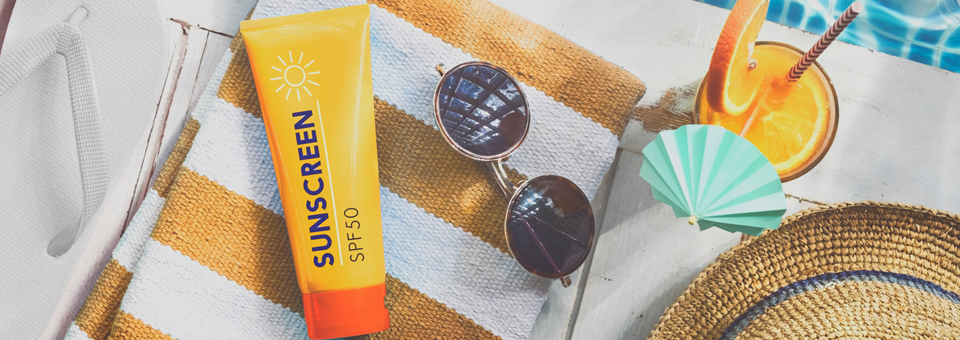A new study, commissioned by the FDA who has told us for years that sunscreen is safe, looked at six common toxic sunscreen ingredients — and found that these chemicals don’t just affect your skin. They accumulate in your bloodstream at dangerously high concentrations — far higher than the FDA’s own safety threshold.1
An editorial accompanying the FDA research in the Journal of the American Medical Association, admitted: “Sunscreens have not been subjected to standard drug safety testing.”2 Even the Wall Street Journal has started asking questions about why these toxins are still used in sunscreens.3
The six chemicals — avobenzone, oxybenzone, octocrylene, homosalate, octisalate, and octinoxate — have been linked to multiple short- and long-term health problems, including hormone disruption and, ironically, skin cancer. The FDA has also requested safety data from sunscreen manufacturers on further six ingredients known to have toxic effects.
These chemicals mimic estrogen, causing hormonal imbalances, allergic reactions, skin irritations and reproductive harm. They also attack the cells in your body, causing premature aging. And studies show they can promote the onset of breast cancer.4
But these ingredients are just the tip of the iceberg. Dangerous chemicals like octyl methoxycinnamate, parabens and formaldehyde are also common. Some sunscreens still also contain PABA (also called octyl-dimethyl and padimate O) — a substance known to attack DNA and cause genetic mutations when exposed to sunlight.
Whether you’re headed to the beach, lazing by the pool or just grilling in your backyard, you don’t need to buy into the sunscreen propaganda and subject your body to these toxins.
Plus… by filtering the sun’s ultraviolet rays, sunscreen blocks your body’s natural ability to make vitamin D. This essential nutrient is vital for building strong bones, as well as preventing inflammation and multiple types of cancer.5,6,7
Enjoy the Sun Safely
- First, I recommend getting 15 to 20 minutes of unprotected sun exposure every day, if possible. This is by far the best way to meet your body’s vitamin D requirements. You should always avoid burning. Only repeated sunburn poses a risk of cancer. Consistent, moderate exposure to the sun is extremely unlikely to cause problems.
- Second, if you’re going to be in the sun for an extended amount of time, I recommend using a natural or zinc oxide-based sunscreen. Unlike chemical-laden sunscreens, zinc oxide sits on top of your skin. It reflects and scatters UV rays and doesn’t penetrate your skin or accumulate in your bloodstream or fat cells.8
Apply zinc oxide generously on exposed skin at least 30 minutes before sun exposure. Look for micro-fine zinc-oxide. It’s nearly invisible. - Finally, try mixing a little cupuaçu butter with your zinc oxide works — it makes it work even better and acts as a sunscreen. Make sure to purchase it cold-pressed.
To Your Good Health,

Al Sears, MD, CNS
1. Matta MK, et al. “Effect of sunscreen application on plasma concentration of sunscreen active ingredients: A randomized clinical trial.” JAMA. 2020;323(3):256-267.
2. Califf RM and Shinkai K. “Filling in the evidence about sunscreen.” JAMA. 2019;321(21):2077-2079.
3. McGinty JC. “Sunscreen chemicals accumulate in body at high levels; FDA study looked at six common ingredients; proposed rule to test safety remains on hold.” Wall Street Journal. July 17, 2020.
4. Matta MK, et al. “Effect of sunscreen application under maximal use conditions on plasma concentration of sunscreen active ingredients: A randomized clinical trial.” JAMA. 2019;321(21):2082-2091.
5. Johnson CS, et al. “Vitamin D-related therapies in prostate cancer.” Cancer Metastasis Rev. 2002;21(2):147-158.
6. Maruyama R, et al. “Comparative genome analysis identifies the vitamin D receptor gene as a direct target of p53-mediated transcriptional activation.” Cancer Res. 2006;66(9):4574-4583.
7. Aranow C. “Vitamin D and the Immune System.” J Investig Med. 2011;59(6):881-886.
8. Hanson KM, et al. “Sunscreen enhancement of UV-induced reactive oxygen species in the skin.” Free Radic Biol Med. 2006;41(8):1205-1212.

